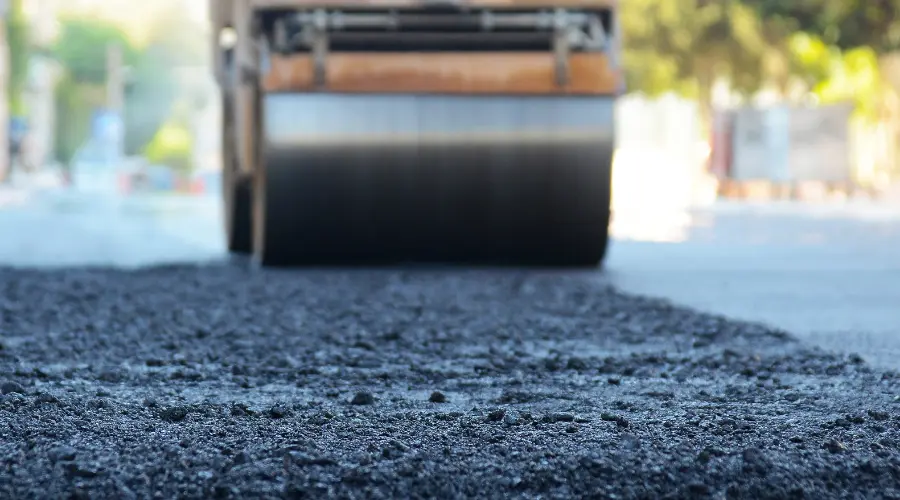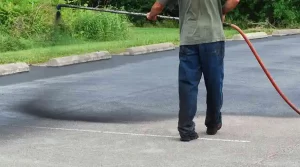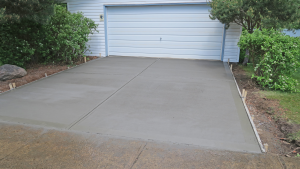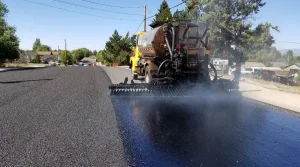Maintaining asphalt surfaces is essential to ensure their longevity, safety, and visual appeal. Hot crack repair, a crucial process in asphalt maintenance, prevents small cracks from escalating into major issues that can compromise structural integrity.
Key Takeaway
- Asphalt cracks are inevitable due to weather changes, traffic, and wear, but timely repairs can save you from costly replacements.
- Hot rubberized sealants offer flexibility, durability, and weather resistance for long-lasting repairs.
- Following industry standards and best practices ensures successful repairs and enhanced pavement life.
- Regular maintenance prevents minor issues from escalating, saving both time and money.
Why Do Asphalt Cracks Form?
Asphalt surfaces endure daily stress from weather, heavy traffic, and general wear and tear. Over time, these factors cause cracks to appear, which, if left untreated, can lead to water penetration, potholes, and structural damage. Common causes include:
- Temperature Fluctuations: Expansion and contraction due to extreme heat or cold.
- Traffic Stress: Heavy loads from vehicles, especially in high-traffic areas.
- Aging: Asphalt naturally deteriorates over time, losing its flexibility and strength.
- Moisture: Water infiltration weakens the pavement’s base, exacerbating cracks.
Addressing cracks early is the most effective way to prevent further damage and extend the life of your asphalt surfaces.
Asphalt Crack Repair Procedures
1. Assessment
Begin with a detailed inspection to determine the extent and type of cracks present. Common crack types include:
- Transverse Cracks: Perpendicular to the pavement’s centerline, often caused by thermal changes.
- Longitudinal Cracks: Run parallel to the centerline, frequently due to traffic stress.
- Block Cracks: Form rectangular patterns and usually indicate aging asphalt.
Prioritize repairs based on severity to maximize efficiency and cost-effectiveness.
2. Cleaning
Proper cleaning ensures a strong bond between the sealant and asphalt. Remove dirt, vegetation, and debris using high-pressure air or wire brushes. Moisture removal is critical, as it can weaken the sealant’s adhesion.
3. Routing
Routing helps create a uniform width and depth for more extensive or irregular cracks, improving sealant effectiveness. Specialized equipment can carve a clean reservoir for optimal results.
4. Heating
Heating the crack area eliminates residual moisture and enhances sealant adhesion. Tools like hot air lances or infrared heaters are commonly used to prepare the surface.
5. Sealing
Hot rubberized crack sealant is applied using specialized applicators. This material fills the crack, forming a durable bond that withstands temperature fluctuations and resists water infiltration.
6. Cooling
Allow the sealant to cool and solidify. Once set, it forms a flexible, watertight seal that adapts to environmental changes.
The Optimal Method: Hot Rubberized Sealant
Hot rubberized sealant is the industry gold standard for crack repairs. Its benefits include:
- Flexibility: Expands and contracts with temperature changes without cracking or losing integrity.
- Durability: Resists water intrusion, UV damage, and heavy traffic wear.
- Adhesion: Bonds tightly to asphalt for long-lasting repairs.
This method is ideal for minor cracks and large-scale repairs, ensuring cost-effective and durable results.
Crack Sealing Standards
Adhering to established industry standards guarantees high-quality repairs. Key standards include:
- ASTM D6690: Specifies requirements for hot-applied, single-component joint and crack sealants.
- ASTM D5078: Details asphalt crack sealant specifications.
- FHWA-RD-99-147: Provides guidelines for selecting appropriate crack sealing treatments.
These benchmarks ensure that materials and application methods meet performance and durability criteria.
Guidelines for Successful Hot Crack Repair
To achieve optimal results, follow these essential guidelines:
- Comprehensive Preparation: Thoroughly clean and prepare the crack and surrounding surface.
- Temperature Management: Apply sealant at the correct temperature to maximize performance.
- Equipment Maintenance: Regularly inspect and maintain equipment to ensure consistent application.
- Proper Application: Ensure the sealant is applied uniformly and fills the crack.
- Quality Materials: Use sealants that meet industry standards for superior results.
6 Best Practices for Long-Lasting Repairs
- Timely Repairs: Address cracks as soon as they appear to prevent further deterioration.
- High-Quality Materials: Invest in premium hot rubberized sealants for better performance.
- Specialized Tools: Use equipment designed specifically for hot crack repair.
- Skilled Technicians: Ensure technicians are well-trained and adhere to safety protocols.
- Weather Considerations: Perform repairs in dry, moderate weather conditions for optimal results.
- Regular Maintenance: Schedule periodic inspections and repairs to prolong pavement life.
FAQ: Repairing Cracks in Hot Asphalt
Q1. When is the best time to repair asphalt cracks?
The ideal repair time is during moderate weather, typically spring or fall when temperatures are stable, and the pavement is dry.
Q2. How often should asphalt be inspected for cracks?
Asphalt should be inspected at least twice a year, preferably in spring and fall, to identify and address cracks before seasonal weather changes exacerbate them.
Q3. Can I repair asphalt cracks myself?
While minor cracks can be addressed with DIY solutions, professional hot crack repair is recommended for long-lasting results, especially for larger or recurring cracks.
Q4. What is the lifespan of hot rubberized sealant?
Hot rubberized sealants typically last 3-7 years, depending on traffic volume, weather conditions, and maintenance practices.
Q5. How does crack repair improve safety?
Sealing cracks prevents potholes, uneven surfaces, and water pooling, reducing the risk of accidents and maintaining a smooth driving surface.
Q6. What happens if cracks are not repaired?
Unrepaired cracks can lead to water infiltration, base layer damage, and potholes, ultimately requiring costly full-depth reconstruction.
Conclusion
Repairing cracks in hot asphalt is a proactive approach to maintaining the integrity and aesthetics of your pavement. You can ensure durable, long-lasting repairs by following proper procedures, using high-quality materials, and adhering to industry standards. Regular maintenance prevents minor issues from escalating and saves significant time and money in the long run.
For professional asphalt repair services, Jersey City Paving and Concrete offers expert solutions tailored to your needs. Contact us today to learn more about our paving services and schedule your consultation.







